5.2: My Will to Chill
- Page ID
- 2374
\( \newcommand{\vecs}[1]{\overset { \scriptstyle \rightharpoonup} {\mathbf{#1}} } \)
\( \newcommand{\vecd}[1]{\overset{-\!-\!\rightharpoonup}{\vphantom{a}\smash {#1}}} \)
\( \newcommand{\id}{\mathrm{id}}\) \( \newcommand{\Span}{\mathrm{span}}\)
( \newcommand{\kernel}{\mathrm{null}\,}\) \( \newcommand{\range}{\mathrm{range}\,}\)
\( \newcommand{\RealPart}{\mathrm{Re}}\) \( \newcommand{\ImaginaryPart}{\mathrm{Im}}\)
\( \newcommand{\Argument}{\mathrm{Arg}}\) \( \newcommand{\norm}[1]{\| #1 \|}\)
\( \newcommand{\inner}[2]{\langle #1, #2 \rangle}\)
\( \newcommand{\Span}{\mathrm{span}}\)
\( \newcommand{\id}{\mathrm{id}}\)
\( \newcommand{\Span}{\mathrm{span}}\)
\( \newcommand{\kernel}{\mathrm{null}\,}\)
\( \newcommand{\range}{\mathrm{range}\,}\)
\( \newcommand{\RealPart}{\mathrm{Re}}\)
\( \newcommand{\ImaginaryPart}{\mathrm{Im}}\)
\( \newcommand{\Argument}{\mathrm{Arg}}\)
\( \newcommand{\norm}[1]{\| #1 \|}\)
\( \newcommand{\inner}[2]{\langle #1, #2 \rangle}\)
\( \newcommand{\Span}{\mathrm{span}}\) \( \newcommand{\AA}{\unicode[.8,0]{x212B}}\)
\( \newcommand{\vectorA}[1]{\vec{#1}} % arrow\)
\( \newcommand{\vectorAt}[1]{\vec{\text{#1}}} % arrow\)
\( \newcommand{\vectorB}[1]{\overset { \scriptstyle \rightharpoonup} {\mathbf{#1}} } \)
\( \newcommand{\vectorC}[1]{\textbf{#1}} \)
\( \newcommand{\vectorD}[1]{\overrightarrow{#1}} \)
\( \newcommand{\vectorDt}[1]{\overrightarrow{\text{#1}}} \)
\( \newcommand{\vectE}[1]{\overset{-\!-\!\rightharpoonup}{\vphantom{a}\smash{\mathbf {#1}}}} \)
\( \newcommand{\vecs}[1]{\overset { \scriptstyle \rightharpoonup} {\mathbf{#1}} } \)
\( \newcommand{\vecd}[1]{\overset{-\!-\!\rightharpoonup}{\vphantom{a}\smash {#1}}} \)
\(\newcommand{\avec}{\mathbf a}\) \(\newcommand{\bvec}{\mathbf b}\) \(\newcommand{\cvec}{\mathbf c}\) \(\newcommand{\dvec}{\mathbf d}\) \(\newcommand{\dtil}{\widetilde{\mathbf d}}\) \(\newcommand{\evec}{\mathbf e}\) \(\newcommand{\fvec}{\mathbf f}\) \(\newcommand{\nvec}{\mathbf n}\) \(\newcommand{\pvec}{\mathbf p}\) \(\newcommand{\qvec}{\mathbf q}\) \(\newcommand{\svec}{\mathbf s}\) \(\newcommand{\tvec}{\mathbf t}\) \(\newcommand{\uvec}{\mathbf u}\) \(\newcommand{\vvec}{\mathbf v}\) \(\newcommand{\wvec}{\mathbf w}\) \(\newcommand{\xvec}{\mathbf x}\) \(\newcommand{\yvec}{\mathbf y}\) \(\newcommand{\zvec}{\mathbf z}\) \(\newcommand{\rvec}{\mathbf r}\) \(\newcommand{\mvec}{\mathbf m}\) \(\newcommand{\zerovec}{\mathbf 0}\) \(\newcommand{\onevec}{\mathbf 1}\) \(\newcommand{\real}{\mathbb R}\) \(\newcommand{\twovec}[2]{\left[\begin{array}{r}#1 \\ #2 \end{array}\right]}\) \(\newcommand{\ctwovec}[2]{\left[\begin{array}{c}#1 \\ #2 \end{array}\right]}\) \(\newcommand{\threevec}[3]{\left[\begin{array}{r}#1 \\ #2 \\ #3 \end{array}\right]}\) \(\newcommand{\cthreevec}[3]{\left[\begin{array}{c}#1 \\ #2 \\ #3 \end{array}\right]}\) \(\newcommand{\fourvec}[4]{\left[\begin{array}{r}#1 \\ #2 \\ #3 \\ #4 \end{array}\right]}\) \(\newcommand{\cfourvec}[4]{\left[\begin{array}{c}#1 \\ #2 \\ #3 \\ #4 \end{array}\right]}\) \(\newcommand{\fivevec}[5]{\left[\begin{array}{r}#1 \\ #2 \\ #3 \\ #4 \\ #5 \\ \end{array}\right]}\) \(\newcommand{\cfivevec}[5]{\left[\begin{array}{c}#1 \\ #2 \\ #3 \\ #4 \\ #5 \\ \end{array}\right]}\) \(\newcommand{\mattwo}[4]{\left[\begin{array}{rr}#1 \amp #2 \\ #3 \amp #4 \\ \end{array}\right]}\) \(\newcommand{\laspan}[1]{\text{Span}\{#1\}}\) \(\newcommand{\bcal}{\cal B}\) \(\newcommand{\ccal}{\cal C}\) \(\newcommand{\scal}{\cal S}\) \(\newcommand{\wcal}{\cal W}\) \(\newcommand{\ecal}{\cal E}\) \(\newcommand{\coords}[2]{\left\{#1\right\}_{#2}}\) \(\newcommand{\gray}[1]{\color{gray}{#1}}\) \(\newcommand{\lgray}[1]{\color{lightgray}{#1}}\) \(\newcommand{\rank}{\operatorname{rank}}\) \(\newcommand{\row}{\text{Row}}\) \(\newcommand{\col}{\text{Col}}\) \(\renewcommand{\row}{\text{Row}}\) \(\newcommand{\nul}{\text{Nul}}\) \(\newcommand{\var}{\text{Var}}\) \(\newcommand{\corr}{\text{corr}}\) \(\newcommand{\len}[1]{\left|#1\right|}\) \(\newcommand{\bbar}{\overline{\bvec}}\) \(\newcommand{\bhat}{\widehat{\bvec}}\) \(\newcommand{\bperp}{\bvec^\perp}\) \(\newcommand{\xhat}{\widehat{\xvec}}\) \(\newcommand{\vhat}{\widehat{\vvec}}\) \(\newcommand{\uhat}{\widehat{\uvec}}\) \(\newcommand{\what}{\widehat{\wvec}}\) \(\newcommand{\Sighat}{\widehat{\Sigma}}\) \(\newcommand{\lt}{<}\) \(\newcommand{\gt}{>}\) \(\newcommand{\amp}{&}\) \(\definecolor{fillinmathshade}{gray}{0.9}\)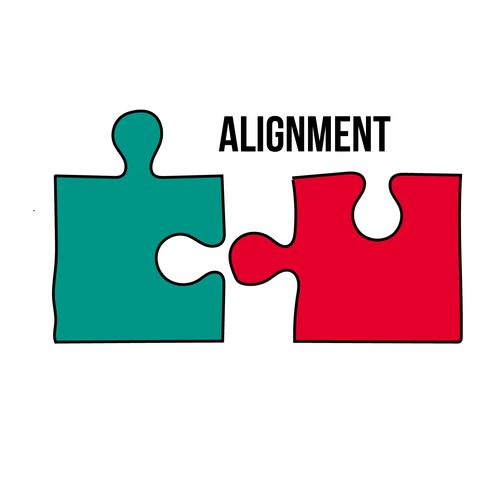
National Health Education Standards (NHES)
- 1.12.7 Compare and contrast the benefits of and barriers to practicing a variety of healthy behaviors, such as managing anger.
- 4.12.3 Demonstrate strategies to prevent, manage, or resolve interpersonal conflict without harming self or others.
Wellness Guidelines
- Increase conflict resolution skills

- Instruction: In a group or think-pair-share format, have participants discuss the following questions. Acknowledge those who have progressed toward their goal(s) and encourage anyone who wants to change or modify their goal to get 1:1 support.
- Share: Let’s discuss our SMART Goals.
- How is it going with your current SMART goal?
- What are some ways you can improve progress toward your goal? (Grows)
- What are some ways you are doing well with progress towards your goal? (Glows)
GUIDELINE: Increase Conflict Resolution Skills
- Share: What guideline do you think is related to today’s lesson? Who has a SMART Goal related to this guideline?
- Instruction: Select one activity.
- Guideline Popcorn: The group lists all 8 guidelines rapidly in popcorn format.
- Guideline Charades: Divide participants into groups and assign each a guideline. Each group has to silently act out the guideline for the rest to guess.
- Two Truths and One Lie:
- Truth 1: Conflict is when people disagree on an issue, or can't get along.
- Truth 2: While conflicts and disagreements are an inevitable part of life, they do not have to lead to violence
- Lie: Anger is the primary emotion of conflict. For more information, visit www.emotionalcompetency.com/conflict.htm.The reality is that many emotions affect conflict; sometimes anger isn’t one of them!
- Questions to discuss and/or journal:
- What are things, situations, or people that make you angry? Why do they make you feel that way?
- What do you usually do when you're angry?
- How do you usually try to make yourself less angry?
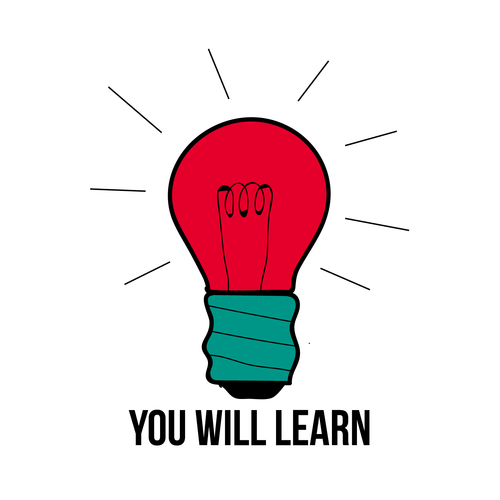
- Understand what anger is and how to respond to it in a healthy way.
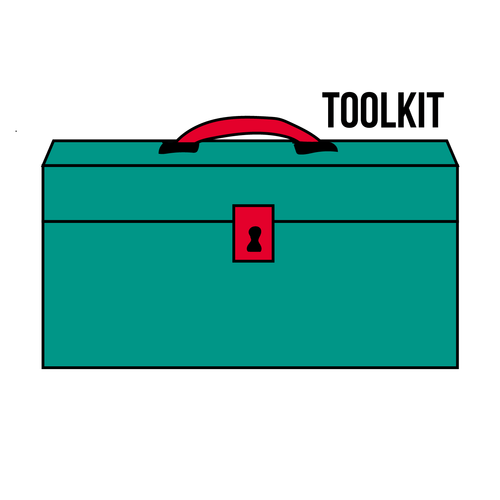
- Worksheets
- Slide presentation
- Ball or another prop for tossing
- Four (4) Chill Out Station Handouts (more may be needed with large groups)
- Blank paper
- Index cards
- Markers
- Bucket
- Two different colors of paper
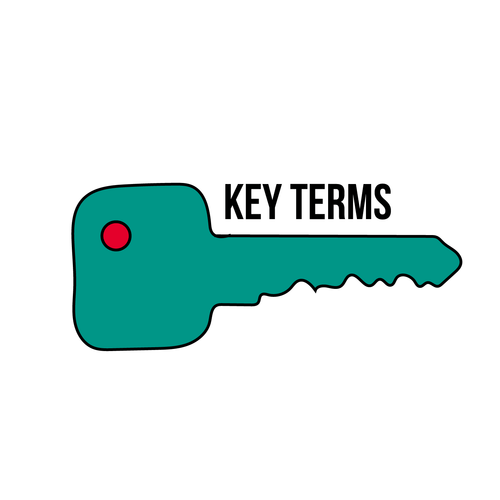
[As defined by APA, 2013; Hendricks et al., 2013; Merriam-Webster, n.d.]
- Anger: An emotion characterized by antagonism toward something or someone you feel has deliberately done you wrong.
- Amygdala (Uh-mihg-dah-luh): The amygdala is the part of the brain responsible for processing emotions and memory, identifies threats and sends out an alarm for us to protect ourselves.
- Pre-frontal Cortex: The area of the brain that is responsible for thoughts/ judgments and assesses the rationality of your emotional reaction.
- Cope: To deal with problems and difficult situations and try to come up with solutions.
- Evaluate: Determine the significance or worth of something.
- Benefit: A good or helpful result or effect.
- Barrier: A problem that makes something difficult or impossible.
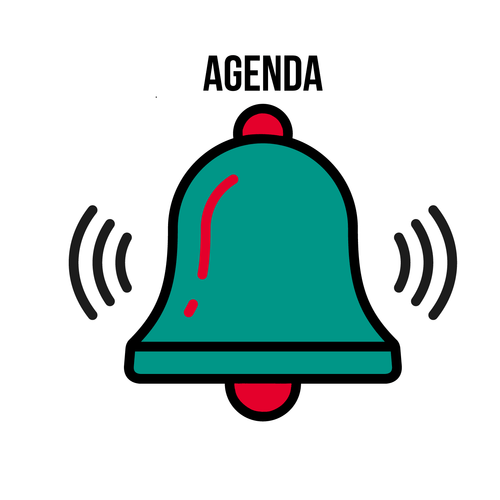
- Do Now
- Brain’s Response to Anger
- The Iceberg
- Chill Out Stations
- Exit Ticket
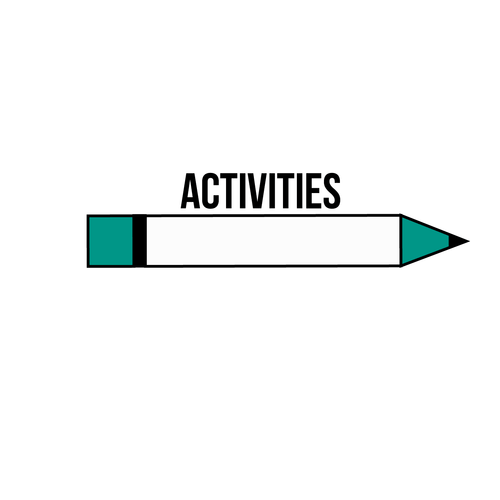
Do Now:
- Instruction:
- Begin the session by pretending to be really angry. For example, slam doors, yell, make a scene, etc.
- Share:
- I’m having a hard time controlling what? Anger.
- Whoever I pass the ball (or another prop) to, share something that makes you angry then throw to someone else.
- You can respond to anger in a positive or negative way.
- What are some examples of responding to anger in a negative way? If you lose control and verbally or physically assault someone else or his/her property, you are resolving the problem in a negative, unhealthy manner.
- What are some examples of responding to anger in a positive way? If you are angry about an injustice and work to remedy the problem, you are dealing with anger in a healthy, positive way.
Good to Know: Brain’s Response to Anger
- Instruction:
- Have participants complete the fill-in-the-blank on the worksheet and/or that is displayed on the board, projector, or worksheet with help from the word bank.
- Share:
- What is anger? It is an emotion characterized by antagonism toward something or someone you feel has deliberately done you wrong (American Psychological Association, 2013).
- What does deliberately mean? It means on purpose or intentionally.
- What happens to your body when you are angry? Muscles tense up, heart rate speeds up, blood pressure rises, the rate of breathing increases, attention narrows and becomes locked onto the target of your anger.
- However, this emotion actually occurs from a perception in your brain. Let’s first explore what happens in your brain to trigger an angry emotion.
- Share:
- Anger and all other emotions begin in your brain, but your body can also experience a physiological response (a reaction from the body) in these moments.
- The part of the brain to first react to a situation is the part that perceives threats and triggers the “flight or fight” response. It is called the amygdala (Uh-mihg-dah-luh), and it immediately sends out a response to the body (Hendricks et al., 2013).
- What’s fight or flight? It’s a survival mechanism that’s evolved over thousands of years to protect ourselves. For example, do you run from the bear or fight the bear?
- The amygdala is the part of the brain responsible for identifying a threat and, in response, for sending out an That results in us taking steps to protect ourselves (Hendricks et al., 2013).
- All of this happens before the cortex, the part of the brain responsible for the thought and judgment, even recognizes that something is happening (Hendricks et al., 2013). This is why you might say or do something without even thinking about it first.
- The amygdala is so efficient at warning us about threats that it gets us
reacting (with our actions) before the cortex is able to check the how reasonable our reaction is. In other words, our brains are wired in such a way as to influence us to act before we can properly consider the consequences of our actions (Hendricks et al., 2013).
- Next, your body gets a big surge of energy and your muscles tense up (Hendricks et al., 2013). This is why you feel the immediate need to take action.
- Your heart rate, breathing rate, and blood pressure all rise. Sometimes you may even sweat or get goosebumps (Hendricks et al., 2013).
- Your brain also releases chemicals that make this burst of energy last a lot longer. Once you feel that increased energy, it is difficult to calm down, and it may take hours before you feel normal again. As a result, you are more likely to get upset about something small, if you were so upset earlier in the day.
- Share:
- However, there is a part of your brain that can help you stay calm before a full-blown It is called the pre-frontal cortex, and it can help control your emotions (Hendricks et al., 2013).
- You have the power to decide whether your judgment or your emotions get the best of you.
- One way we can gain control of our emotions is through meditation and yoga. Mediation and yoga can help us be less stressed out. One way to learn how to meditate and do yoga is through an organization called Sahaja Yoga https://www.tnmeditation.org/kids-meditation and is Sajaha Meditation www.studentsmeditation.org.
Real World Relevance: The Iceberg
Adapted from The Iceberg Model (Goodman, 2002).
- Set Up:
- Display or draw a photo or a picture of an iceberg (pictured below).
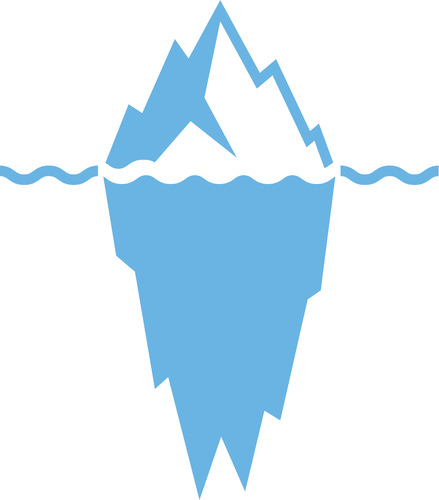
- Instruction:
- Label the top portion of the iceberg as “anger” and the underwater portion as “true feeling.” Also, display on a projector or write on the board “True Feeling” examples such as:
- Mad: Resentful, irritated, enraged, hostile, insulted, sore, annoyed, upset, bitter, aggressive, provoked, frustrated, irritable, edgy, mean, trapped
- Sad: disappointed, discouraged, ashamed, powerless, diminished, guilty, hurt, dissatisfied, disgusted, sulky, sense of loss, lonely, unhappy, depressed, distant
- Confused: upset, doubtful, uncertain, indecisive, embarrassed, hesitant, shy, distrustful, lost, unsure, frustrated, uncomfortable, restless, skeptical, withdrawn
- Hurt: crushed, pained, tortured, rejected, heartbroken, humiliated, wronged
- Afraid: anxious, nervous, scared, worried, threatened, fearful, insecure, jealous, suspicious
- Indifferent: bored, disinterested, blah
- Label the top portion of the iceberg as “anger” and the underwater portion as “true feeling.” Also, display on a projector or write on the board “True Feeling” examples such as:
- Share:
- A healthy coping strategy to control anger is by communicating the truth, “under the surface” feeling that’s causing your angry reaction. How do you know what that feeling is though? Let’s learn how by using an iceberg as an analogy.
- To cope means to deal with problems and difficult situations and try to come up with solutions.
- Anger is at the top of the iceberg, and the true feelings are underwater. Angry responses are like what we see above water, but really there are underlying emotions and feelings that we confuse for anger.
- We use anger to cover up our true feelings because those feelings can be uncomfortable or vulnerable and we by instinct want to protect ourselves.
- Today, we are going to look at the possible feelings that are “under the surface” of anger.
- Instruction:
- Have participants come back to what they shared or wrote down during the Do Now.
- Challenge them to think what the true feeling might be associated with that anger and write those words below the surface of the icebergs on their worksheets. For example, “I get really angry when I am lost (driving around in circles), but the true feeling is actually helplessness and powerlessness.”
- Share:
- Once you know what the true feeling is under the surface, it’ll be easier to communicate which is a healthy coping strategy to deal with anger.
- Instead of letting it build up inside you, communicate how you’re feeling! You can try reaching out to friends and family members to vent or you can write these feelings down in a journal.
- Another strategy is to try using guided meditation to calm and re-center yourself when working with difficulties. You can check out some guided meditations by visiting the Sahaja Meditation website: http://studentsmeditate.org/
Hands-On: Chill Out Stations
- Set Up:
- Around the room, create Chill Outstations with signage, written instructions (Chill Out Station Handouts), and any other materials listed in the toolkit.
- Instruction:
- Split participants up into groups.
- Each group will be assigned to begin at one station.
- After a certain amount of time (suggest 5-15 minutes), signal (stopping of music playing, gong, whistle, etc.) groups to switch stations.
- Repeat until all the groups have participated in each station.
- Review the instructions for each station prior to beginning.
Chill Out Station 1: I-Messages
- Share:
- It is useful to learn how to communicate your true emotions to other people.
- One way to do this is by using something called an “I-Message” I-Messages are a way to communicate your feelings without placing blame/accusing someone else.
- “I-Messages” are made up of 4 parts.
- Think about the last time someone else made you angry, and write an I-Message in response.
- I feel _________________ (be specific with your emotions!)
- When you _____________ (give details of the behavior or circumstances)
- Because ______________ (this is the hard one – the WHY – the effect the behavior has on you)
- And I want you to _______ (suggest an alternative course of action)
Chill Out Station 2: Snowball
- Share:
- Each of you will receive 2 pieces of different colored construction paper. Please write one- or two-word responses on each piece of construction paper for each prompt.
- One color is for one prompt and the other color is for the other prompt.
- When finished, crumple the sheet of paper into a ball and toss it into the bucket.
- Then, reach in and grab someone else’s “snowball”, and read the response aloud.
- Color #1 Prompt: When I feel angry, I tend to...
- Color #2 Prompt: When someone is angry with me, I feel...
- After your group is done reading the “snowballs,” discuss the questions:
- What are the most common reasons we get angry? What do you usually do when you get angry? Is your reaction healthy or unhealthy?
- How do people feel when someone is mad at you? How can we address this feeling in a positive manner?
Chill Out Station 3: Benefits vs. Barriers
- Share:
- Discuss and determine the benefits and barriers to responding to anger in a positive way.
- Let’s evaluate how you respond to anger. Evaluate means to determine the significance or worth of something. The benefit is a good or helpful result or effect. The barrier is a problem that makes something difficult or impossible.
| Benefits | Barriers |
| Maintaining better health | Facing overwhelming emotions (pain, frustration, fear, sadness, etc.) |
| Preventing psychological and social problems linked to anger | Feeling unsafe/threatened emotionally and/or physically (physical conflict, injustice, betrayal, verbal attack, etc.) |
| Being more productive | Feeling stressed |
| Maintaining better relationships | Lacking positive conflict-resolution skills |
| Becoming a better communicator | Facing unreasonable expectations |
Sources:
-
American Psychological Association. (2013). Anger. Retrieved From: www.apa.org/topics/anger/
-
Hendricks, L. et al. (2013). The effects of anger on the brain and body. National Forum Journal of Counseling and Addiction 2(1). Retrieved From: http://www.nationalforum.com/Electronic%20Journal%20Volumes/Hendricks,%20LaVelle%20The%20Effects%20of%20Anger%20on%20the%20Brain%20and%20Body%20NFJCA%20V2%20N1%202013.pdf
Chill Out Station 4: What Do I Say?
- Share:
- On the index cards, write down a time or scenario when you felt angry with someone. Fold up the index card after you’re finished.
- Pair up with someone in your group and randomly pick two index cards.
- Has each participant read the scenario on the index card aloud to their partner and then discuss the following: What can you say or do in that situation to help deal with feelings of anger?
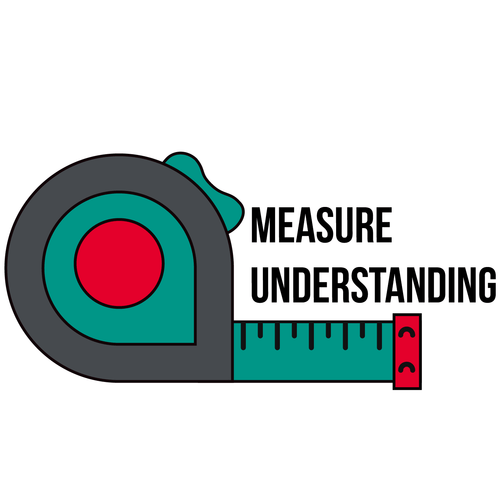
Exit Ticket:
- Instruction:
- Have participants write on their worksheet or answer the following question(s) out loud.
- What strategy that you learned today are you going to use next time you are angry?
- Buy yourself some time before reacting
- Think about my true feelings
- Deep breathing
- Talk with friends/family
- Use I-messages to express yourself
- Try to compromise
- Hold yourself responsible for your actions
- Be realistic
- What was your favorite chill out station and why?
- Have participants write on their worksheet or answer the following question(s) out loud.
Bibliography
- American Psychological Association. (2013). Anger. Retrieved From: http://wapa.org/topics/anger/
- Bronson, M. H. (2009). Glencoe Health. Woodland Hills, California: McGraw-Hill Glencoe.
- Goodman, M. (2002). The iceberg model. Innovation Associates Organizational Learning. Hopkinton, MA. Retrieved from www.ascd.org/ASCD/pdf/journals /ed_lead/ el200910_kohm_iceberg.pdf
- Hendricks, L. et al. (2013). The effects of anger on the brain and body. National Forum Journal of Counseling and Addiction 2(1). Retrieved From: www.nationalforum.com/Electronic%20Journal%20Volumes/Hendricks,%20LaVelle%20The%20Effects%20of%20Anger%20on%20the%20Brain%20and%20Body%20NFJCA%20V2%20N1%202013.pdf
- Meeks, L., Heit, P., Page, R. (2011). Comprehensive School Health Education, 7th edition. New York: McGraw-Hill.
- Merriam Webster. (n.d.). Communication. Retrieved From: http://wmerriam-webster.com/
- Merriam-Webster Learner’s Dictionary. (n.d.). Barrier. Retrieved From: http://www.learnersdictionary.com/definition/barrier
- Merriam-Webster Learner’s Dictionary. (n.d.). Benefit. Retrieved From: www.learnersdictionary.com/definition/benefitn
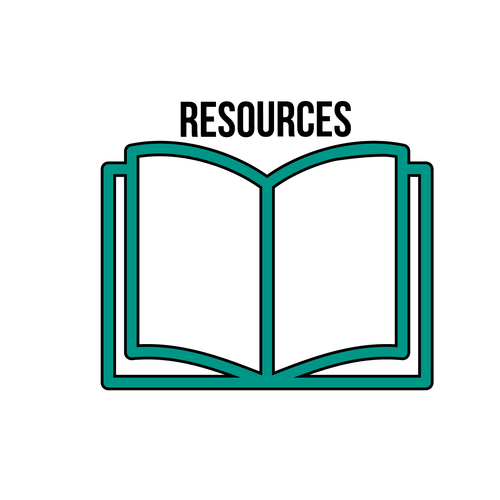
- UCLA Health. (2017). Free Guided Meditations. Retrieved From: http://marc.ucla.edu/mindful-meditations
This lesson was created in partnership with Albert Einstein College of Medicine Department of Epidemiology and Population Health with funding support by the National Institutes of Health NIDDK Grant R01DK097096.

